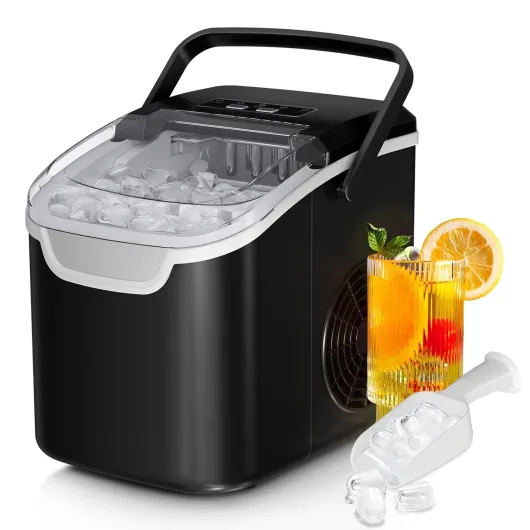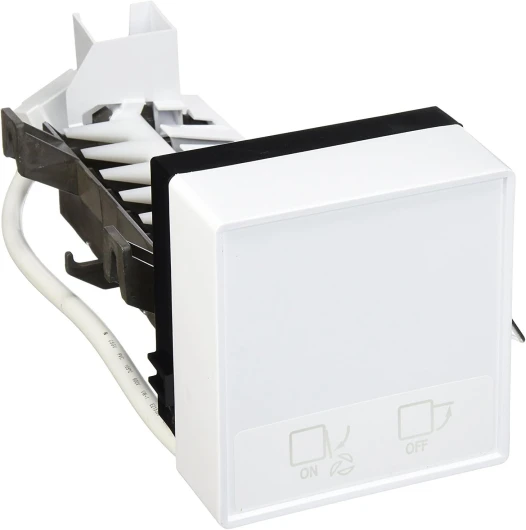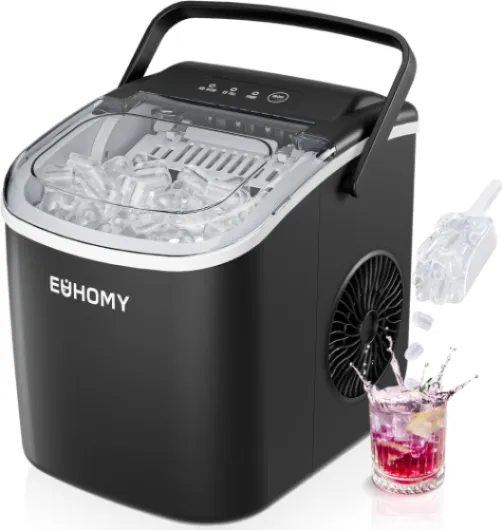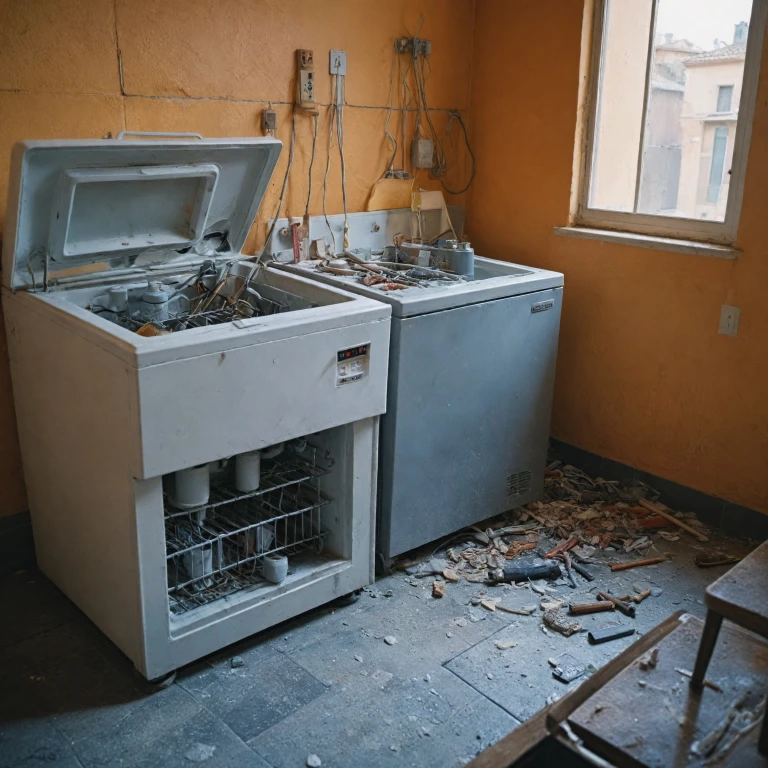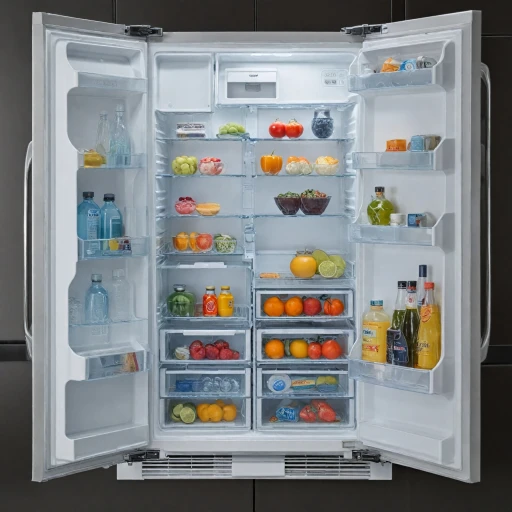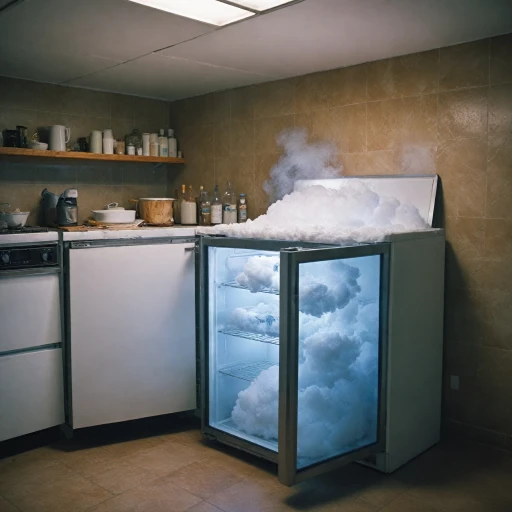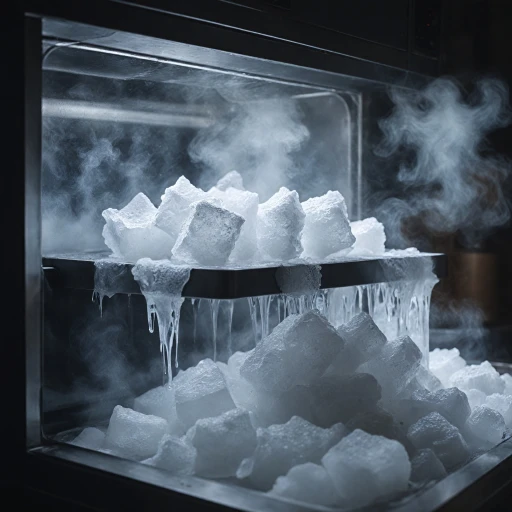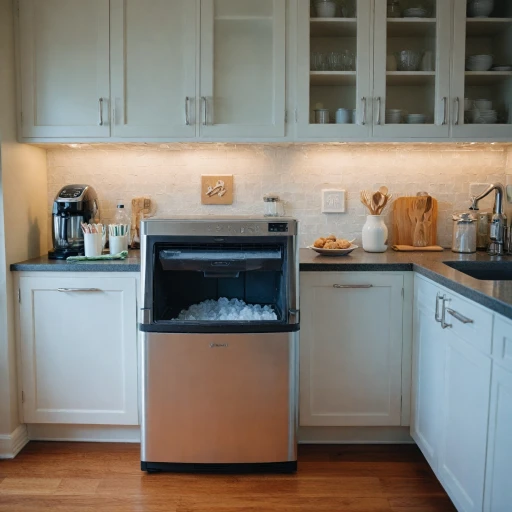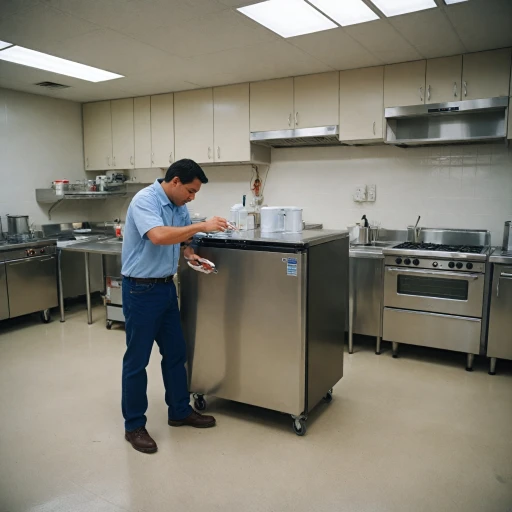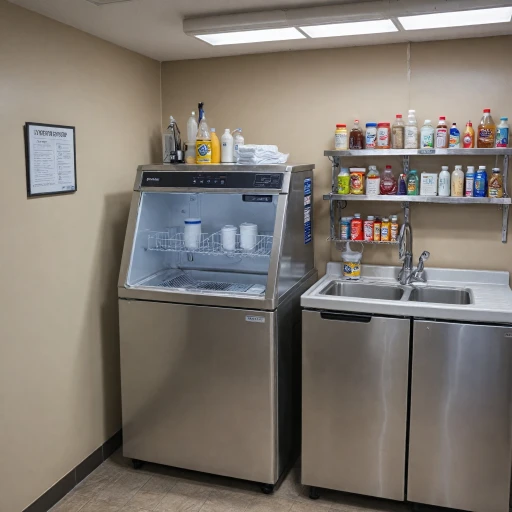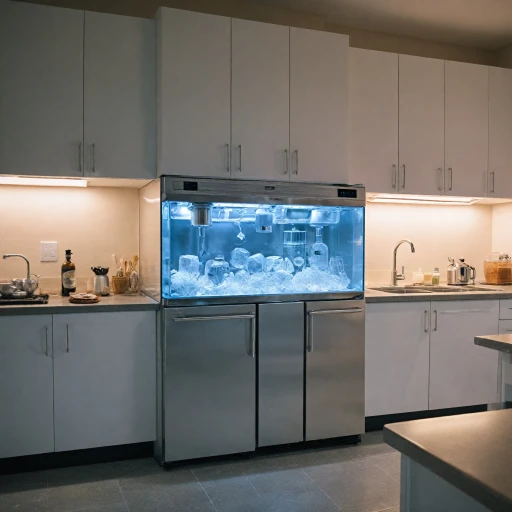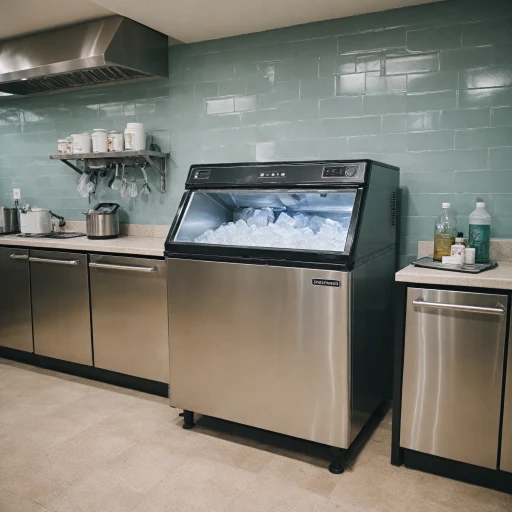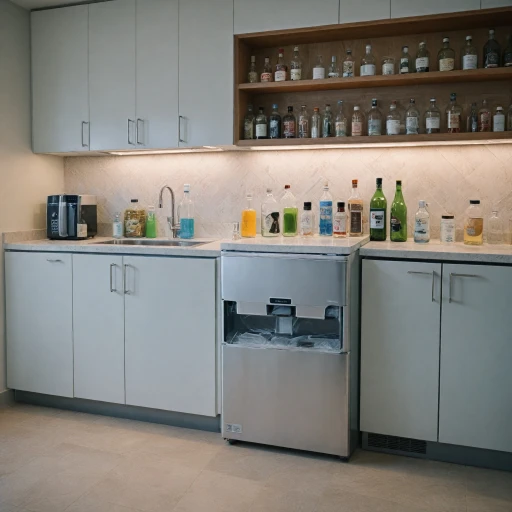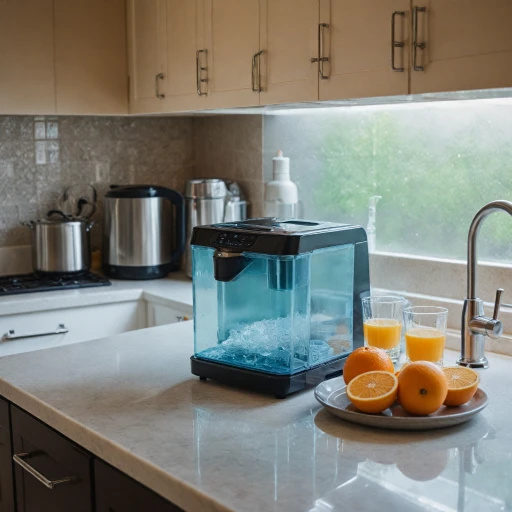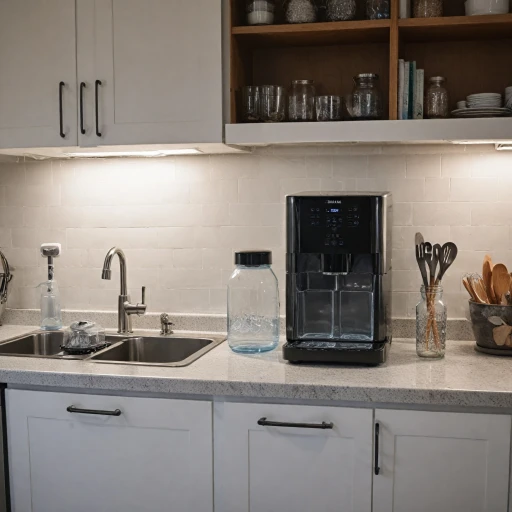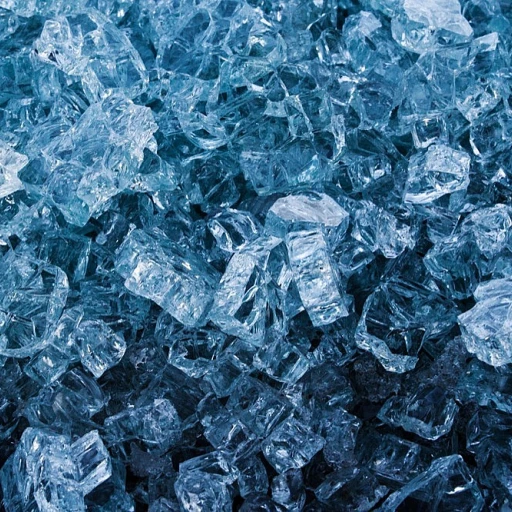
Understanding Your Frigidaire Ice Maker
Getting Acquainted with the Ice Maker System
Understanding how your Frigidaire ice maker works is crucial before diving into any troubleshooting or repair. Let's start with the basics. The ice maker consists of several key parts and components working together to ensure efficient ice production. These include water inlet valves, the control board, a main control valve, and the ice maker unit itself.How the Ice Maker Operates
Your Frigidaire ice maker is integrated into the freezer or refrigerator and relies on both water supply and temperature control to function properly. Here’s a simple overview:- Water Inlet Valve: This valve is responsible for allowing water to flow from your home’s plumbing system into the ice maker. It’s crucial for ice making.
- Control Board: Controls the activation of various parts during the ice making cycle.
- Temperature Control: The freezer temperature setting impacts the ice production rate. Lower temperatures facilitate better ice cube formation.
Identifying Ice Making Issues
You might face situations where the ice maker isn't working as expected. For instance, it might fail to produce ice or produce smaller ice cubes than usual. By having a basic understanding of how each part works, you can more easily diagnose and address any issues that arise. For more detailed insights into what can go wrong, you might find it helpful to explore common issues often associated with Frigidaire ice makers. This troubleshooting guide can offer valuable solutions to common problems. By gaining familiarity with the main components and their functions, you'll be better equipped to maintain and if needed, troubleshoot your ice maker. This foundational knowledge can help prevent unnecessary repairs or replacements, keeping the appliance in optimal working condition for longer.Common Issues and Their Causes
Identifying Frequent Malfunctions and Their Reasons
- No Ice Production: When your Frigidaire ice maker stops producing ice, it can be attributed to several common issues. The water inlet valve may be restricted or broken, preventing the flow of water necessary for ice making. Always ensure the water supply is properly connected and the valve is functioning.
- Ice Cubes Too Small or Deformed: Inconsistent ice sizes are frequently caused by low water pressure or a partially clogged water filter. Consider checking these components or replacing faulty parts.
- Ice Maker Not Working at All: If the unit is entirely unresponsive, the main control board might be failing. Investigate the control board for any signs of damage or misconfiguration. Additionally, issues with the power supply or malfunctioning sensors can impede ice production.
- Insufficient Temperature Regulation: An important aspect of ice making is maintaining the correct freezer temperature. If the refrigerator or freezer cannot maintain a steady cooling temperature, culprit parts might include the temperature control components.
- Water Leakage: Leaks can occur due to failures within the water inlet, inlet valve, or hoses. It's crucial to regularly check these connections and ensure they are secured and intact to prevent water-related issues.
If these challenges seem too complex, or if the DIY solutions don't resolve the problems, it might be wise to explore replacement parts or consult a professional for repair services. Keeping a manual on hand can also help navigate these issues more effectively.
Step-by-Step Troubleshooting Guide
Diagnosing and Fixing Your Frigidaire Ice Maker
To get your Frigidaire ice maker back on track, it's essential to identify the root of the problem before rolling up your sleeves. Let's break down the troubleshooting process step by step to ensure your ice maker starts making ice like before.1. Check the Water Supply
- Ensure the water supply line is not kinked or frozen. A restricted water line can affect ice production.
- Inspect the water inlet valve; it should be open and functioning correctly. If not, a replacement might be necessary.
2. Assess the Inlet and Control Valves
- The water inlet valve needs to be checked regularly. If it’s clogged or malfunctioning, it could hinder water flow into the ice maker.
- Evaluate the main control board for any faults. This component is critical for the smooth operation of your ice maker.
3. Examine the Temperature
- Verify the freezer temperature is set correctly. Ice makers perform best at a temperature of around 0°F (-18°C).
- Temperature issues can cause irregular ice cubes or stop ice production altogether.
4. Inspect Replacement Parts
- Go through the manual Frigidaire provides to identify necessary replacement parts. A faulty component might be bringing your ice maker to a halt.
- Consider checking the water filter. Over time, it can become clogged, affecting water flow and ice quality.
5. Evaluate Electrical Connections
- Inspect electrical connections and ensure they are securely in place. Loose connections can prevent the appliance from operating properly.
- If unfamiliar with electrical work, it may be best to consult a repair manual or contact a professional.
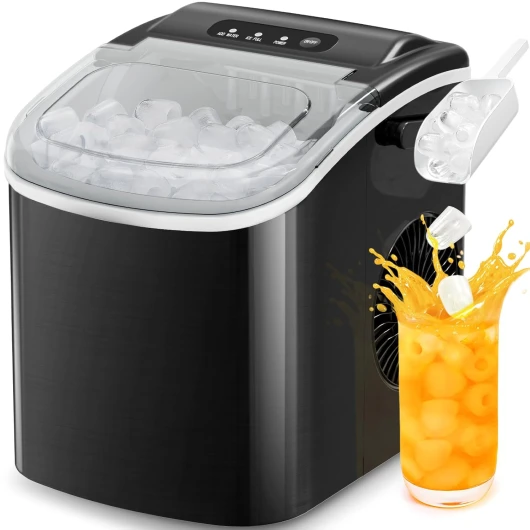
- + Portable and easy to carry with handle
- + Self-cleaning feature for convenience
- + Produces 26 lbs of ice in 24 hours
- + Makes 9 ice cubes in just 6 minutes
- + Stainless steel design for durability and modern look
Maintenance Tips for Optimal Performance
Essential Maintenance Tips for Smooth Performance
To ensure your Frigidaire ice maker consistently delivers ice cubes and avoids common issues, it’s crucial to maintain it regularly. Here are some practical maintenance tips to keep your appliance in top shape:- Regular Cleaning: It’s important to clean your ice maker every few months. This includes both the ice maker itself and parts like the water inlet and ice container. Use a mild detergent and warm water, ensuring no residue remains. This practice prevents the build-up of minerals and keeps ice production efficient.
- Check the Water Filter: A clogged water filter can limit water flow and ice production. Refer to your manual Frigidaire for the recommended interval for filter replacement. Ensuring the water filter is clean will keep your ice maker working effectively.
- Examine the Inlet Valve and Water Supply: Consistent water flow is key for making ice. Regularly inspect the water inlet valve for clogs or leaks. Make sure the refrigerator’s water supply is steady and the valve is fully open.
- Control the Temperature: Ensure your freezer's temperature is set appropriately, typically between 0 to 5°F (-18 to -15°C). This helps in maintaining a steady ice-making environment within your refrigerator.
- Inspect the Control Board and Other Parts: Periodically check the control board and replacement parts for signs of wear or damage. These components are essential for the seamless function of your ice maker.
- Manual Reference: Refer to your user manual for specific maintenance instructions tailored to your appliance model. This can often provide solutions to common issues faced by Frigidaire ice makers.
When to Call a Professional
Knowing When to Seek Expert Help
If your Frigidaire ice maker continues to have issues after you’ve attempted troubleshooting, it may be time to call a professional. Identifying when an expert’s intervention is necessary can save you time and potentially prevent further damage to your appliance.- Persistent Problems: If your ice maker is still not making ice or water is not being dispensed correctly despite following troubleshooting steps, consider reaching out to a service technician.
- Complex Parts Replacement: The replacement of certain parts like the main control board, water inlet valve, or any complex mechanical parts generally requires specialized expertise.
- Electrical Issues: If you suspect electrical faults or your ice maker fails to power on, it’s essential to have a professional check for safety and functionality concerns.
- Water Supply Issues: Problems with water inlet or consistent water flow should be addressed by someone familiar with refrigerator and freezer plumbing systems.
- Unusual Noises: Persistent loud or unusual sounds coming from the ice maker or freezer compartments may indicate underlying mechanical issues best handled by a qualified repair technician.
Frequently Asked Questions
Frequently Asked Questions about Frigidaire Ice Makers
- Why is my Frigidaire ice maker not producing ice cubes?
There could be various reasons for the lack of ice production. Check the water supply to ensure the inlet valve is operating correctly, and ensure the temperature settings in your refrigerator and freezer are ideal for ice making. Refer back to the common issues we've covered earlier. - How often should I clean the ice maker?
For optimal performance and to avoid common issues, it's advisable to clean your ice maker and accessories every three to six months. This will help in avoiding mineral buildup and ensuring the smooth operation of the appliance. - What are the replacement parts needed for repair?
Common parts you may need to replace include the water filter, inlet valve, and control board. Always refer to the manual for compatible parts before purchasing replacements. - Why is my ice maker making strange noises?
Noises can be alarming but often result from the ice being dumped or the water valve operating. If the sounds persist, check the appliance for any loose parts or malfunctions in the main control. Seeing our step-by-step guide can offer more context on diagnosing the issue. - How do I check the water supply connection?
Confirm that the water supply line is securely connected and not obstructed. The inlet valve should be free from debris to allow water flow. Ensuring a proper connection will directly impact the frigidaire ice production.
-logo-retina.jpg)
